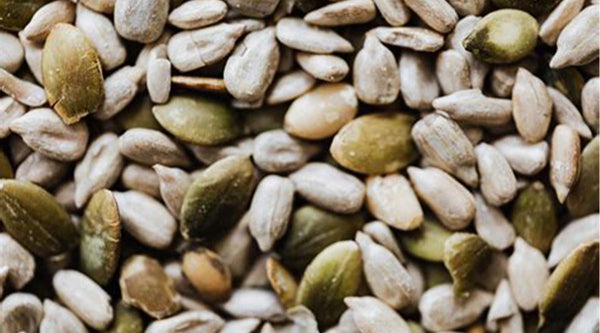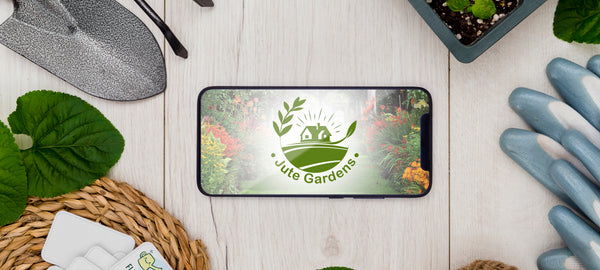
Start Your Garden Off Right: The Ultimate Guide to Starting Seeds Indoors
Starting seeds indoors can be a great way to get a head start on the gardening season and ensure that your seedlings have the best possible chance of survival. However, timing is crucial when it comes to starting seeds indoors. In this article, we will go over the factors to consider when deciding when to start seeds indoors and how to properly care for your seedlings.
When To Start Seeds
First and foremost, it's important to consider the timing of when to start your seeds indoors. The ideal time to start different types of seeds indoors will vary depending on the type of plant. Annuals, for example, should be started about 6-8 weeks before the last frost date in your area, while perennials can be started 4-6 weeks before the last frost date. Vegetable seeds, on the other hand, should be started about 4-6 weeks before the last frost date, or as recommended on the seed packet. It's important to know your local frost date, which can be found online or by asking at your local nursery.
Light Requirements
Another important factor to consider when starting seeds indoors is the light requirements of the seeds. Different types of seeds have different light requirements, and it's important to provide the right amount of light for your seedlings to thrive. For example, many vegetable seeds require a lot of light, so they should be placed under grow lights or in a sunny window. On the other hand, some seeds, such as those from shade-loving plants, require less light and should be placed in a location with indirect sunlight.
Temperature
Temperature is also a crucial factor to consider when starting seeds indoors. The ideal temperature range for seed germination and seedling growth will vary depending on the type of seed, but in general, it's best to keep the temperature between 60-70°F (15-21°C). If the temperature is too low, seed germination may be slowed or stopped altogether, and if it's too high, seedlings may become weak or stunted. To maintain the proper temperature, you can use a heating mat or a thermometer, which can be found at most garden centers or online.
Sowing Your Seeds
Once you've determined the ideal time to start your seeds and have the necessary equipment to control the light and temperature, it's time to prepare your seeds for indoor starting. The specifics of preparing and sowing the seeds will depend on the type of seed you are using, but in general, you should sow your seeds at a depth of about twice the width of the seed. You should also leave enough space between each seed so that they have room to grow. Once you have sown your seeds, cover the trays with plastic wrap or a lid to keep the soil moist, and place them in a warm location.
Caring For Your Seeds
Caring for your seedlings is an important step in the indoor seed-starting process. You will need to provide your seedlings with the right amount of water and humidity to ensure that they grow strong and healthy. This may take some trial and error, but with a little bit of practice, you will be able to provide the perfect environment for your seedlings. When your seedlings have grown large enough, it's time to transplant them into your garden. To do this, simply dig a hole in your garden that is slightly larger than your seed tray, and gently remove the seedling from the tray. Be sure to handle the seedling gently, as the roots can be easily damaged. Once you have transplanted your seedlings, be sure to give them plenty of water and monitor their growth.

In conclusion, starting seeds indoors can be a great way to get a head start on the gardening season, but timing, light, temperature, and care are all crucial factors to consider. By paying attention to these factors, you can ensure that your seedlings have the best possible chance of survival and that you will have a successful gardening season. Remember to consider the type of plant you are starting, its light and temperature requirements, and the last frost date in your area. Proper preparation and care are also important, including providing the right amount of light, water, and temperature for seedlings. By following these guidelines, you can ensure that your seedlings will thrive and be ready to transplant into your garden. Starting seeds indoors can be a rewarding experience and a great way to get a head start on your gardening season. With a little bit of planning and care, you can ensure that your seedlings will be strong and healthy, giving you a bountiful harvest in the end.
Frequently Asked Questions
Q: What is the ideal time to start seeds indoors?
A: The ideal time to start different types of seeds indoors will vary depending on the type of plant. Annuals should be started about 6-8 weeks before the last frost date in your area, perennials can be started 4-6 weeks before the last frost date, and vegetable seeds should be started about 4-6 weeks before the last frost date, or as recommended on the seed packet.
Q: How do I determine the last frost date in my area?
A: You can determine the last frost date in your area by checking online resources or asking at your local nursery.
Q: How do I know how much light my seedlings need?
A: Different types of seeds have different light requirements. Many vegetable seeds require a lot of light, so they should be placed under grow lights or in a sunny window. On the other hand, some seeds such as those from shade-loving plants, require less light and should be placed in a location with indirect sunlight.
Q: What is the ideal temperature range for seed germination and seedling growth?
A: The ideal temperature range for seed germination and seedling growth will vary depending on the type of seed, but in general, it's best to keep the temperature between 60-70°F (15-21°C).
Q: How do I maintain the proper temperature for seedlings?
A: You can maintain the proper temperature for seedlings by using a heating mat or a thermometer, which can be found at most garden centers or online.
Q: How do I care for my seedlings?
A: To care for your seedlings, provide them with the right amount of water and humidity to ensure that they grow strong and healthy. Monitor the environment they are in and adjust accordingly.
Q: When should I transplant my seedlings into my garden?
A: Your seedlings should be transplanted into your garden when they have grown large enough. Typically this is when they have several sets of leaves and have outgrown their seed tray.
Q: How do I transplant my seedlings?
A: To transplant your seedlings, dig a hole in your garden that is slightly larger than your seed tray, and gently remove the seedling from the tray. Be sure to handle the seedling gently, as the roots can be easily damaged. Once you have transplanted your seedlings, be sure to give them plenty of water and monitor their growth.

